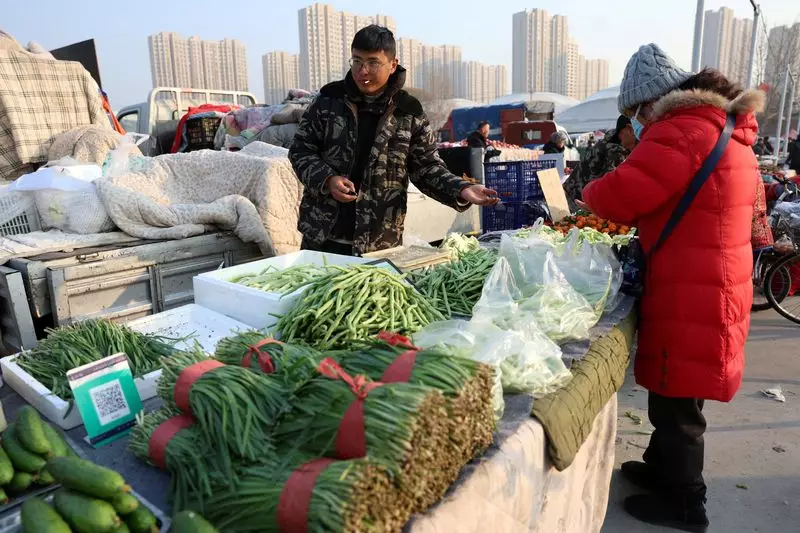China is currently navigating a period marked by meager consumer price increases and deepening producer price deflation. The October data released by the National Bureau of Statistics demonstrates a significant slowdown in consumer inflation, which rose by only 0.3% compared to the same month last year. This marks the slowest growth rate observed in four months, following a marginal increase of 0.4% in September. The government’s efforts to support the economy through a substantial new stimulus plan have yet to produce tangible benefits for consumers or producers, creating a complex economic landscape that analysts view with trepidation.
The consumer price index (CPI) has come in below expectations, with analysts forecasting a 0.4% increase. The reality of a 0.3% rise exacerbates concerns about consumer confidence within the world’s second-largest economy. Core inflation, which excludes food and energy prices that are subject to high volatility, showed a slight uptick of 0.2%, indicating some pressures on core goods rather than essential commodities. These trends suggest a cautious consumer sentiment, largely shaped by broader economic anxieties amid stagnant wages and a tumultuous real estate market.
The lack of robust spending is partially attributed to the recent Golden Week holiday, which typically sees a spike in tourism and shopping. According to Bruce Pang, chief economist at JLL, the effects of stimulus policies rolled out since late September have yet to materialize, indicating a lag in domestic demand stimulation. With many households still reeling from issues tied to the declines in property values, the consumer base is growing increasingly conservative in spending habits, putting further stress on inflationary pressures.
Recently approved by China’s top legislative body, the 10 trillion yuan ($1.4 trillion) stimulus package aimed at alleviating the financial strains from local government debt has left many investors underwhelmed. In contrast to hopes for strong fiscal measures aimed directly at consumer demand, this package appears focused on structural adjustments rather than immediate economic uplift. Driven by the desire to support local governments grappling with “hidden debts,” the package has raised questions regarding its efficacy in providing sufficient economic stimulus in the near term.
Finance Minister Lan Foan has offered reassurances that additional support focusing on tax policies to revitalize the housing market is forthcoming. However, some analysts express concern regarding the timing of further economic interventions. Speculation surrounding international dynamics, particularly the prospect of Donald Trump returning to the U.S. presidency, suggests that Beijing may be strategically withholding more impactful stimulus until the political landscape becomes clearer.
Adding complexity to this economic narrative is the deepening deflation in the producer price index (PPI). The October figures reveal a 2.9% year-on-year decline in producer prices, marking the largest decrease seen in nearly a year. This slide has significant implications for manufacturers, with construction sectors such as petroleum, natural gas extraction, and automotive production facing notable pressures. The deflationary trend highlights the challenges confronting the supply side of the economy, where lower demand continues to impact output prices adversely.
Continuous deteriorations in the manufacturing sector resonate with a broader theme of uncertainty in economic recovery. Analysts from Goldman Sachs predict that producer prices may not recover until the third quarter of 2025, indicative of prolonged challenges within the industrial framework. The interlinked nature of consumer spending and manufacturing output reinforces the cyclical nature of this economic struggle.
China’s economic trajectory remains fraught with challenges as policymakers attempt to bolster a faltering growth rate through targeted stimulus measures. While the latest data reflects a temperate increase in consumer prices and a pronounced fall in producer prices, the overall economic outlook remains guarded. Although further stimulus is anticipated and financial policies are under review, the effectiveness of these measures hinges on consumer confidence and market responsiveness. As the government seeks to navigate these tumultuous waters, both domestic and international observers remain closely attuned to developments that could significantly influence China’s economic landscape moving forward.

